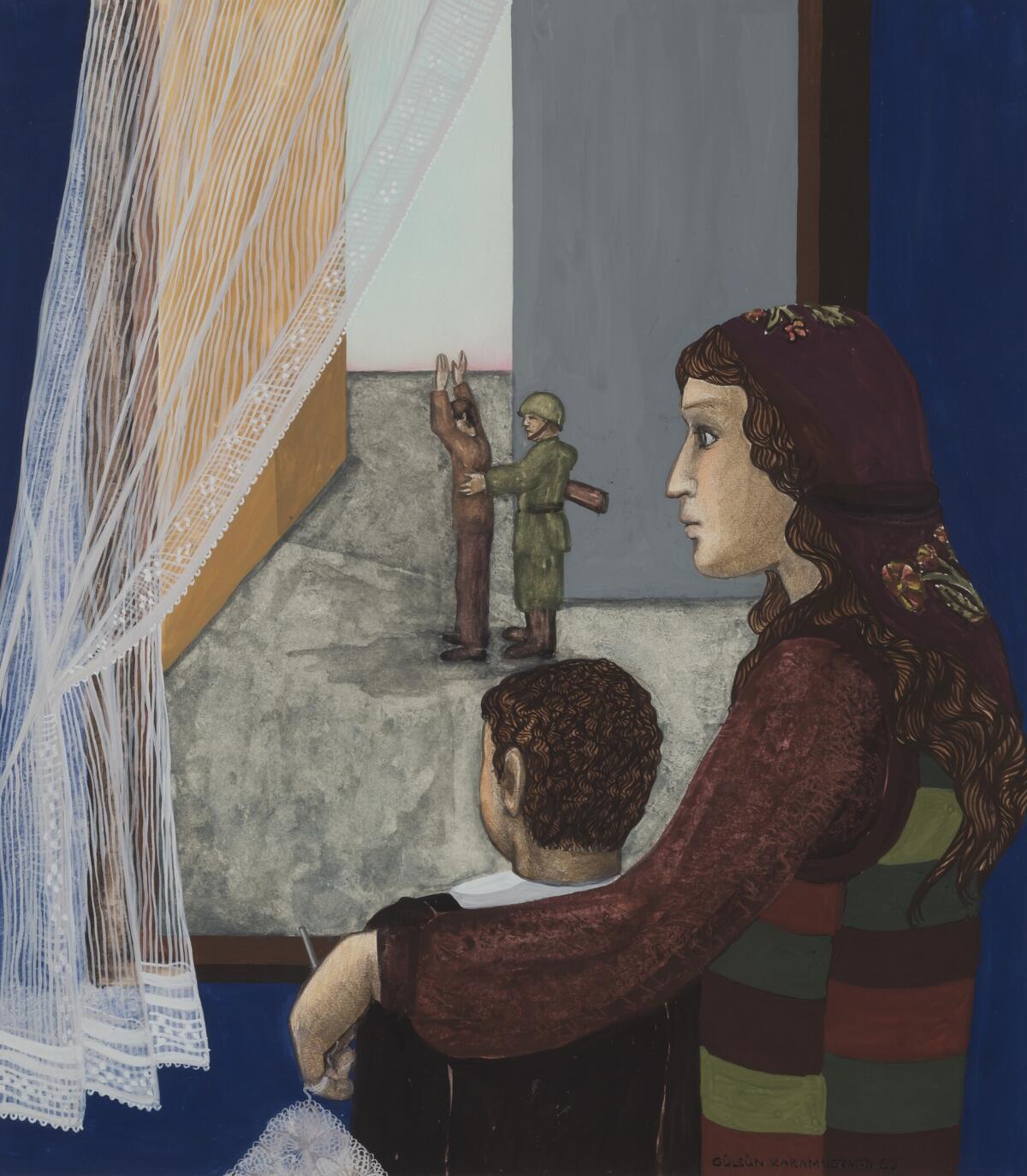No Feeling is Final. The Skopje Solidarity Collection, A joint exhibition of Kunsthalle Wien and the Museum of Contemporary Art (MoCA) Skopje, North Macedonia
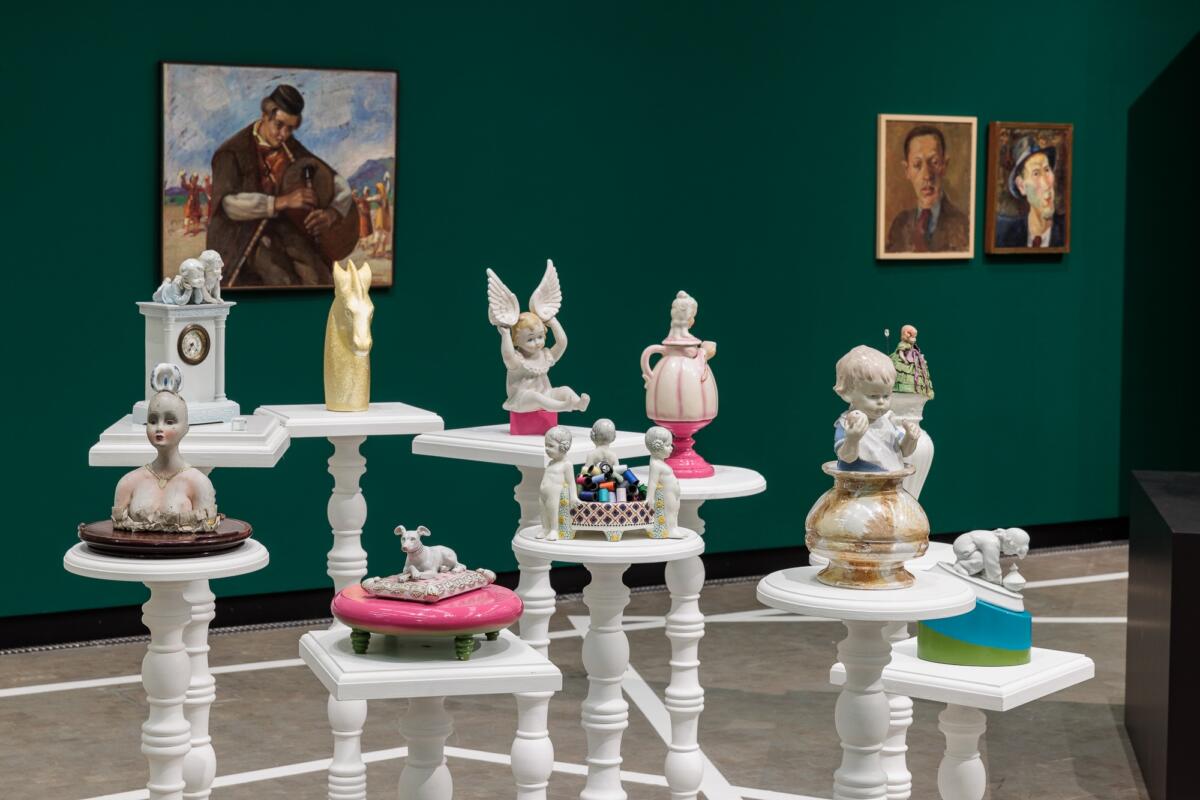
What makes a collection exhibition worth attending is the curatorial ability to show, against any forms of assumption, how a specific collection can reorient us in the way we look at the issues of the present, and to demonstrate that the conditions in which the collection has been assembled still hold a specific historical weight that has not been investigated enough yet. For No Feeling is Final. The Skopje Solidarity Collection, an exhibition that opened at Kunsthalle Wien, on the 20th of April and will last until the 28th of January, 2024, the artistic team, formed by the curatorial collective WHW (What, How & for Whom), challenges visitors’ on what “solidarity” might mean in today’s socio-political climate by anchoring their proposal on a concrete case study: the Collection of Solidarity of the Contemporary Art Museum (MoCA) Skopje. In close collaboration with Contemporary Art Museum (MoCA) Skopje, the WHW invited six artists to engage with the artworks of this one-of-a-kind collection: Belgrade-based artist Siniša Ilić, the Macedonian duo Yane Calovski and Hristina Ivanoska, Turkish filmmaker and visual artist Gülsün Karamustafa, Australian artist Brook Andrew, and Egyptian artist Iman Issa. Finally, they asked photographer, Elfie Semotan, and the Serbian, Vienna-based fiction writer, Barbi Marković, to create a visual and written commentary on the preparatory path that led to the collection’s arrival in the Austrian capital. In the spring of 2024, No Feeling is Final will travel to the National Gallery of Prague and then return to its original caretaker, MoCA, Skopje, at the end of next year.
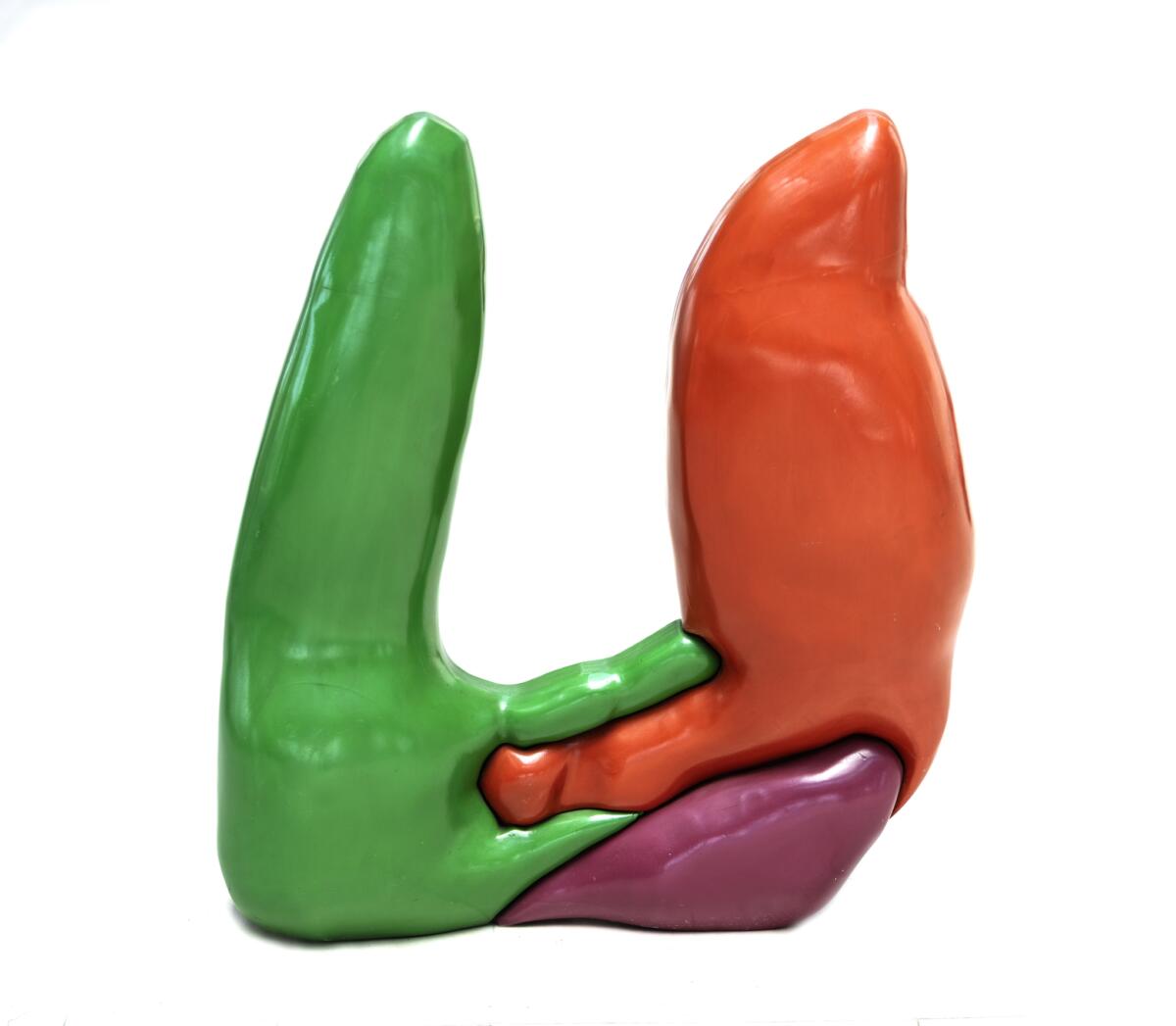
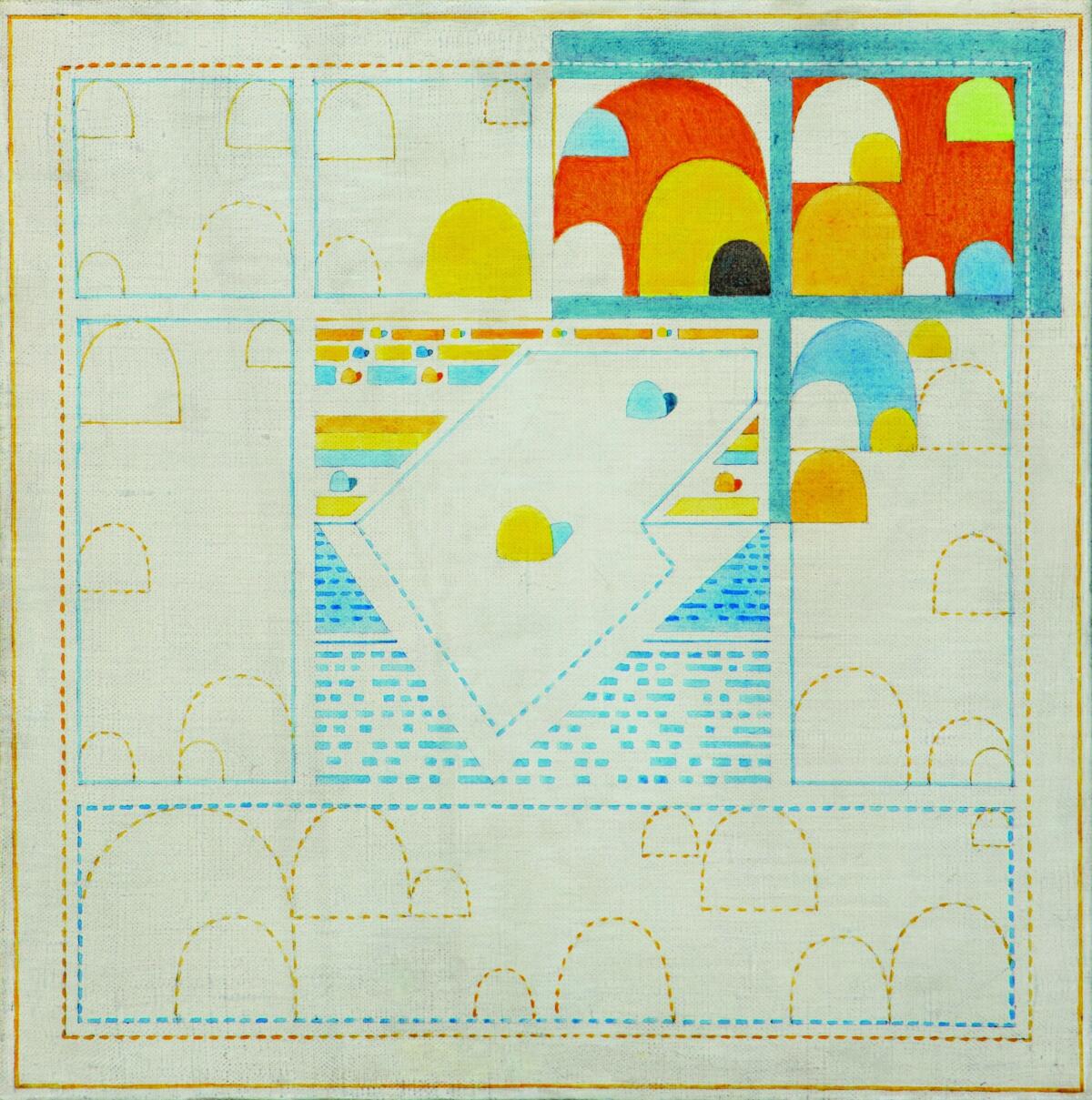

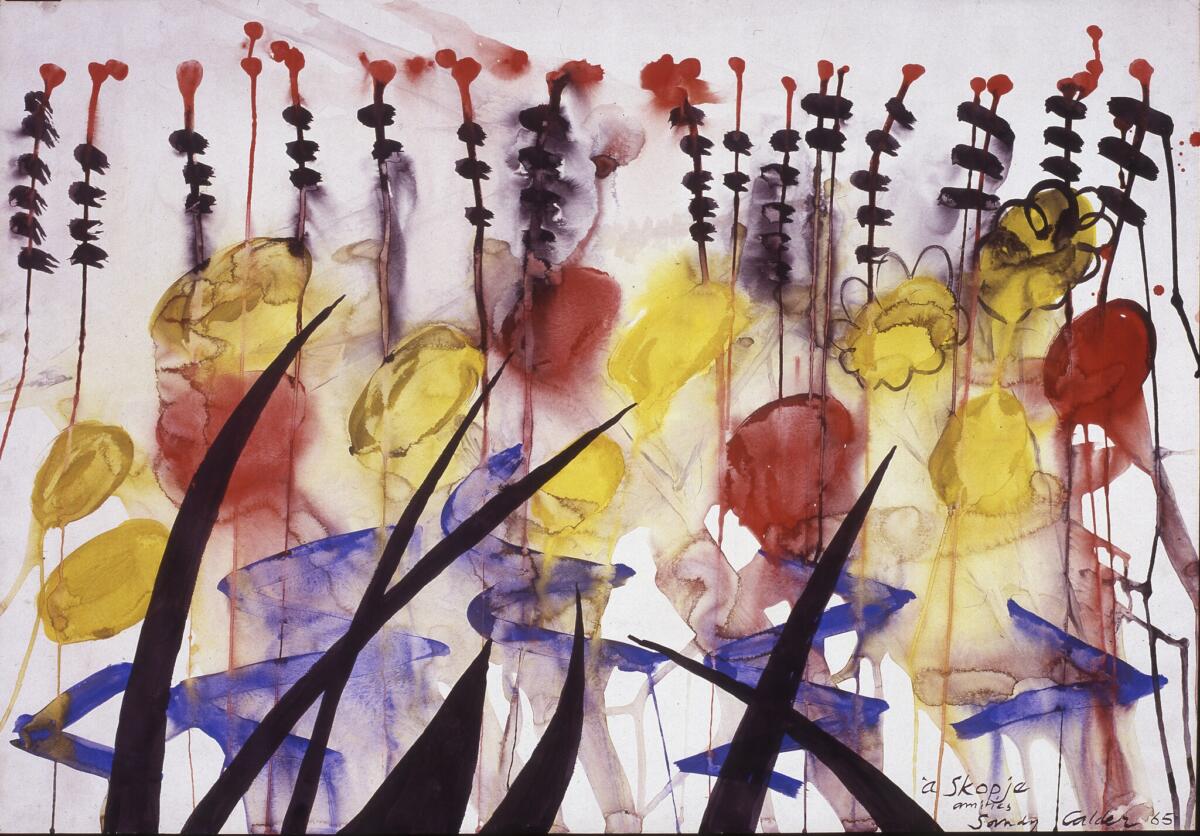

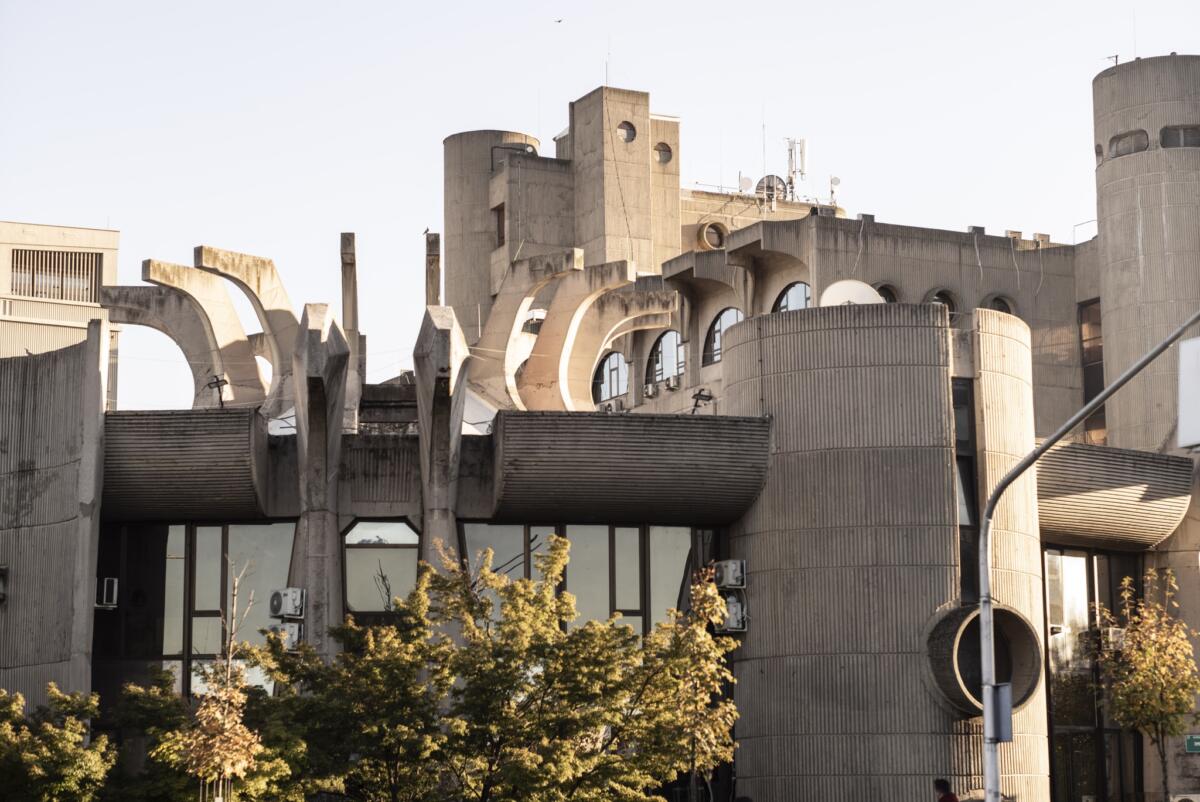
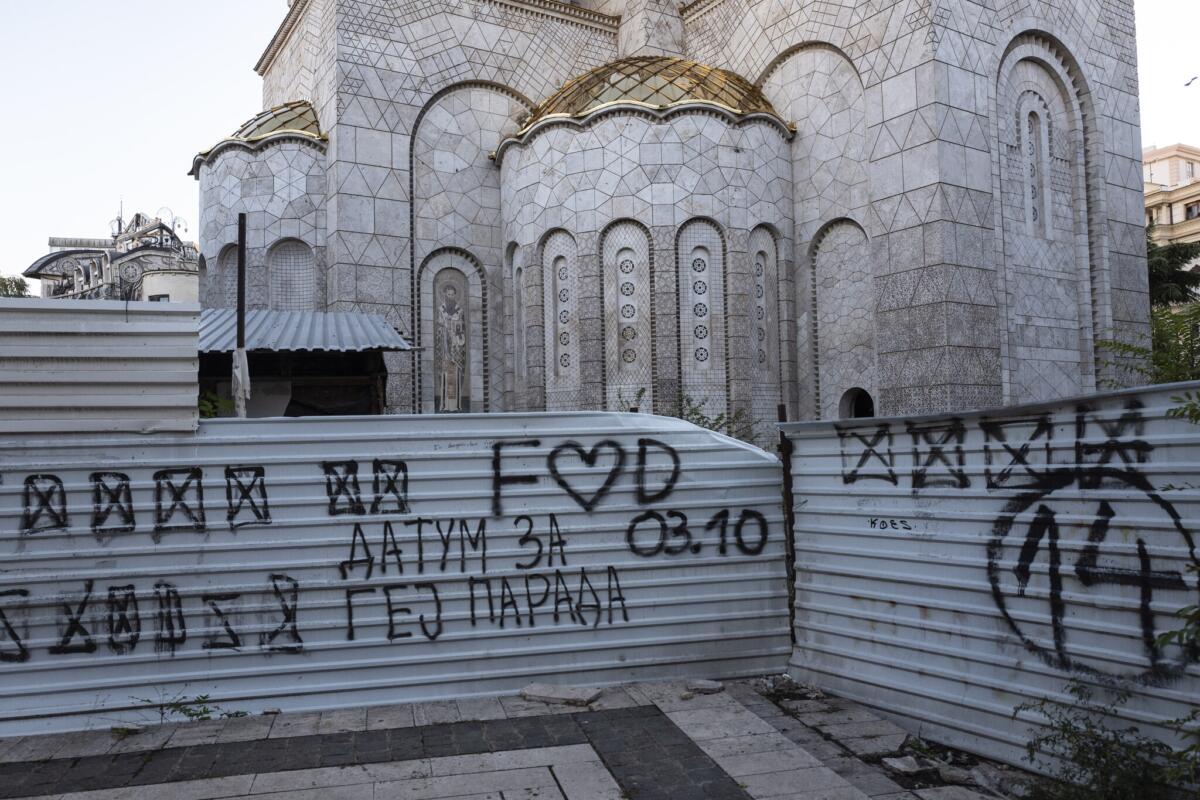
After twenty years of working from Zagreb, Croatia, with many high-profile international projects, Ivet Ćurlin, Nataša Ilić, and Sabina Sabolovićhave took leadership of Kunsthalle Wien, following the resignation of former director Nicolaus Schafhausen in 2019. Since then, the curatorial trio has proposed a unique program encompassing monographic exhibitions and group shows leading to international collaborations, that demonstrate their commitment to fueling productive exchange, often between the Western Balkans – where they come from – and Central Europe – where they have relocated themselves, through locally informed and context-aware sensibilities, and by using the exhibition as a tool for political debate – to paraphrase their voices.
Informed by these ambitions, No Feeling is Final has reanimated the historical memory that happened within the broader historical context of the Cold War, such as the amassing of a collection of more than 100 works that followed the destruction of the urban area of Skopje, due to an earthquake in 1963. It was not a bourgeois taste that generated this collection but rather the genuine donations of more than a hundred artists who sent artworks of different media and styles to the North Macedonian capital. The Contemporary Art Museum (MoCA) Skopje was created through this initial gesture of generosity. Even if No Feeling is Final had been conceived two years ago, when neither the recent earthquake in Turkey nor the ongoing Russian invasion of Ukraine were urgent realities as they are today, a parallel between today and the events of the 1960s’ rises spontaneously in anyone’s eyes. While the tragic nature of these kinds of events is a presence in the room, it is not the dominant viewpoint from which the events of 1963 have been told – but rather the contrary. As in the lines of the poem from which WHW have borrowed the exhibition’s title, poet Rainer Maria Rilke encourages readers to examine the facts of life for what they are – in their beauty and obscurity, seemingly, No Feeling is Final provides visitors with the tools to analyze the present critically, without losing an eye toward the future.


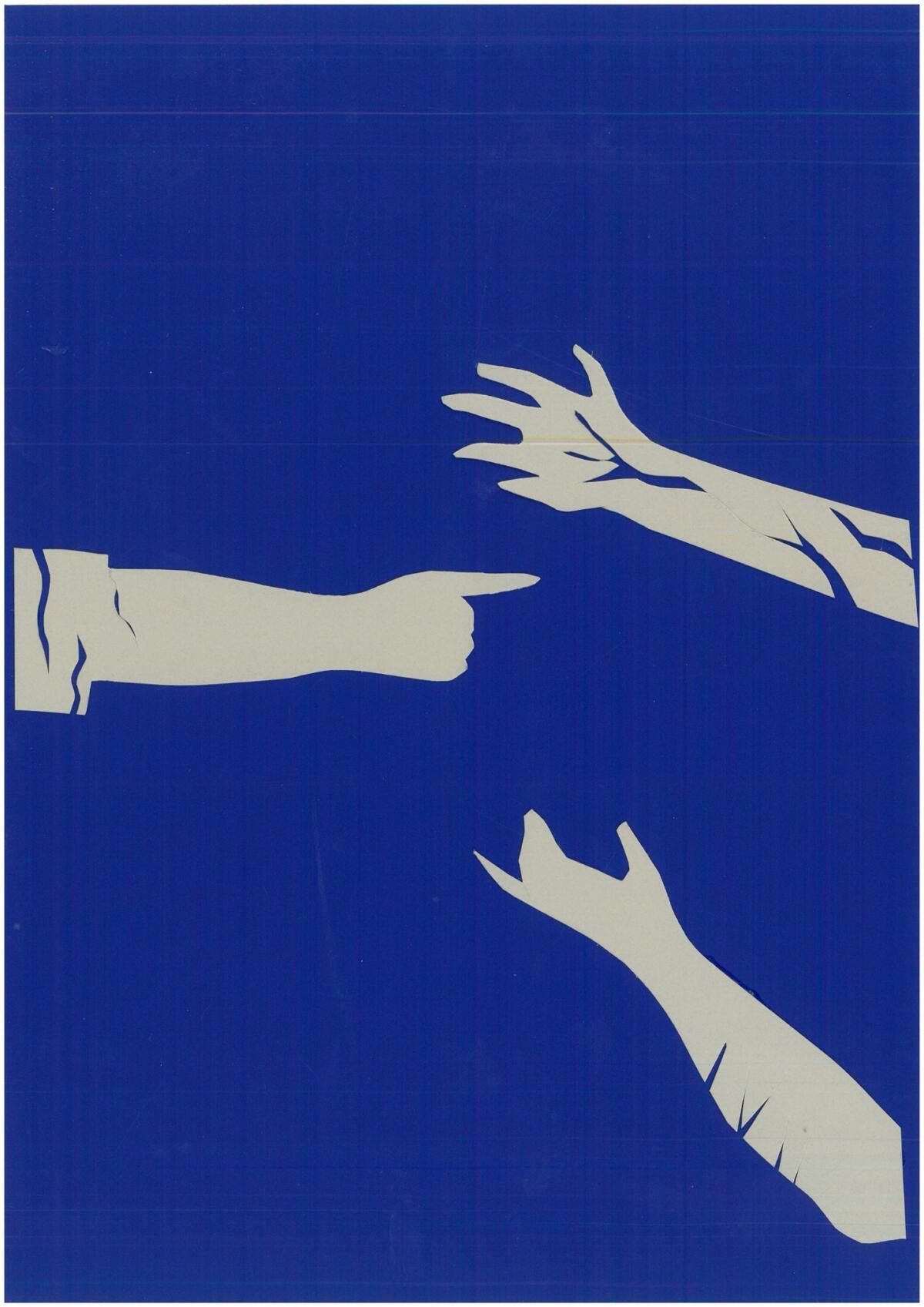

This is particularly evident in the manner through which the artistic team have organized the exhibition space, according to two trajectories. One shows how the newly commissioned interventions interact with the Collection of Solidarity; the other coincides with a historical reconstruction of events that happened from the 1963 earthquake to “Skopje 2014” – a controversial urbanistic project initiated in 2010 that was financed by the then-ruling nationalist party. A similar attempt to keep the future in sight was undertaken by the artists invited to intervene in the collection, who, according to the curatorial statement, had been selected for their documented interest in rewriting historical narrations and questioning the devices that concur to transmission of History itself. Drawing on his indigenous heritage, for example, Brook Andrew’s work, mulunma wiling mangi gudhi (inside the lip of a stolen song), 2023, commented on the complex relationship between appropriation and theft that is reflected in any dominant culture, by placing key Modernist works from MoCA’s collection in an inflatable structure resembling a playground for both adults and children. For those familiar with Andrew’s work, this piece immediately evoked Ahy-kon-uh-klas-tik, a work he realized at the Van Abbemuseum in Eindhoven, the Netherlands, in 2017, combining a trans-historical selection of artworks from the Dutch collection.
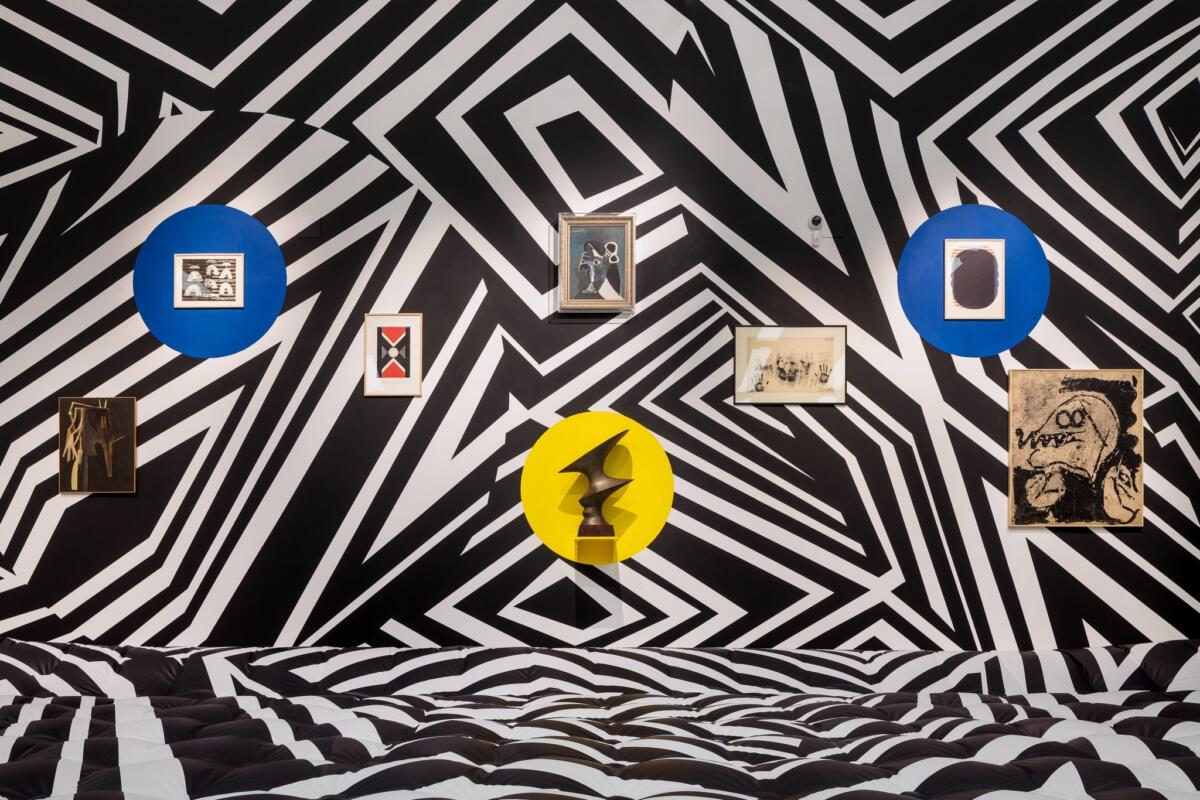

Under the title I, the Artwork (2023), Iman Issa criticized the tendency in art to over-determine and to possibly instrumentalize the meaning of artworks. Among the works presented are pieces from her well-known series Lexicon, 2012 – 2019, that encompass displays of framed texts detailing works not visible to the visitors along with substitutions which she has created, the new objects functioning as surrogates for their originals. Having titled her intervention Crime Scene, 2022-23, Gülsün Karamustafa has delimited a section of the room with colorful wallpaper. Chalked lines on the floor, which go all around her installation, The Monument and the Child, 2010, sculptures and paintings all privately donated by the family of Radmila Ugrinova-Skalovska, leave visitors with the impression that something terrible and unwanted has happened – an atmosphere that conjures the Freudian Unheimliche.
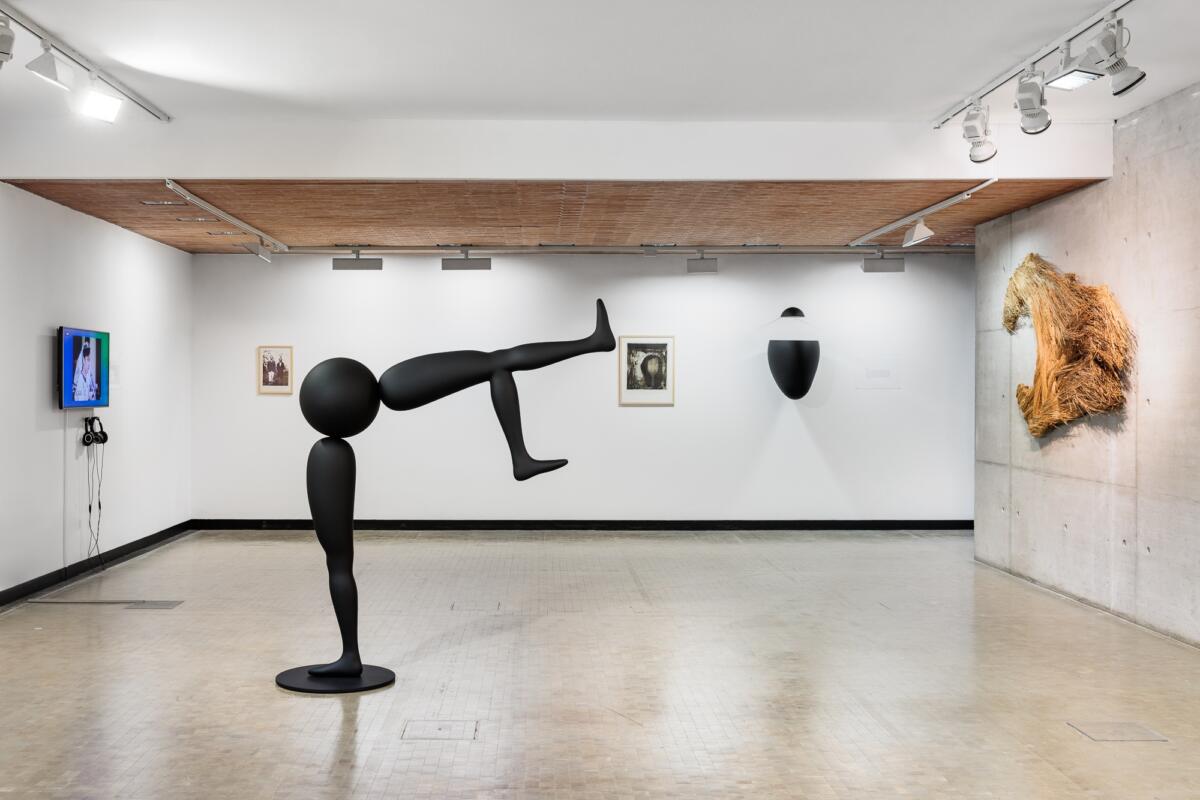
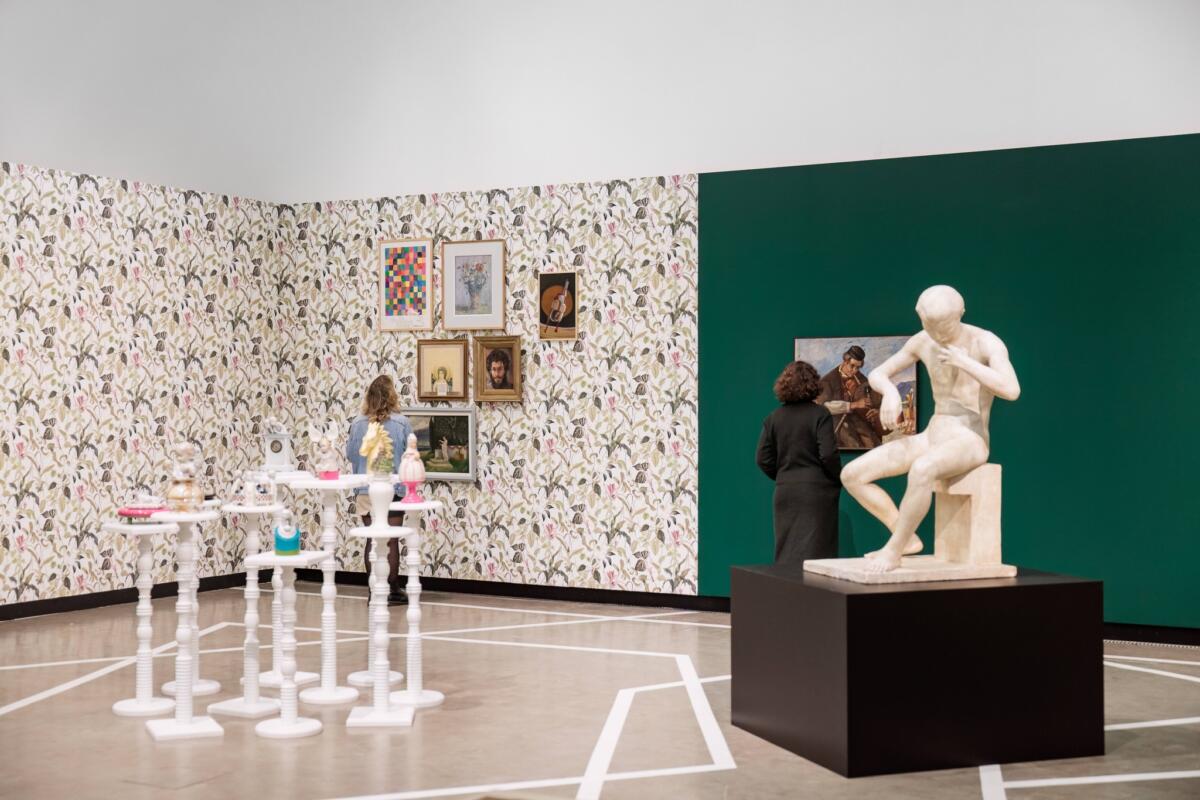
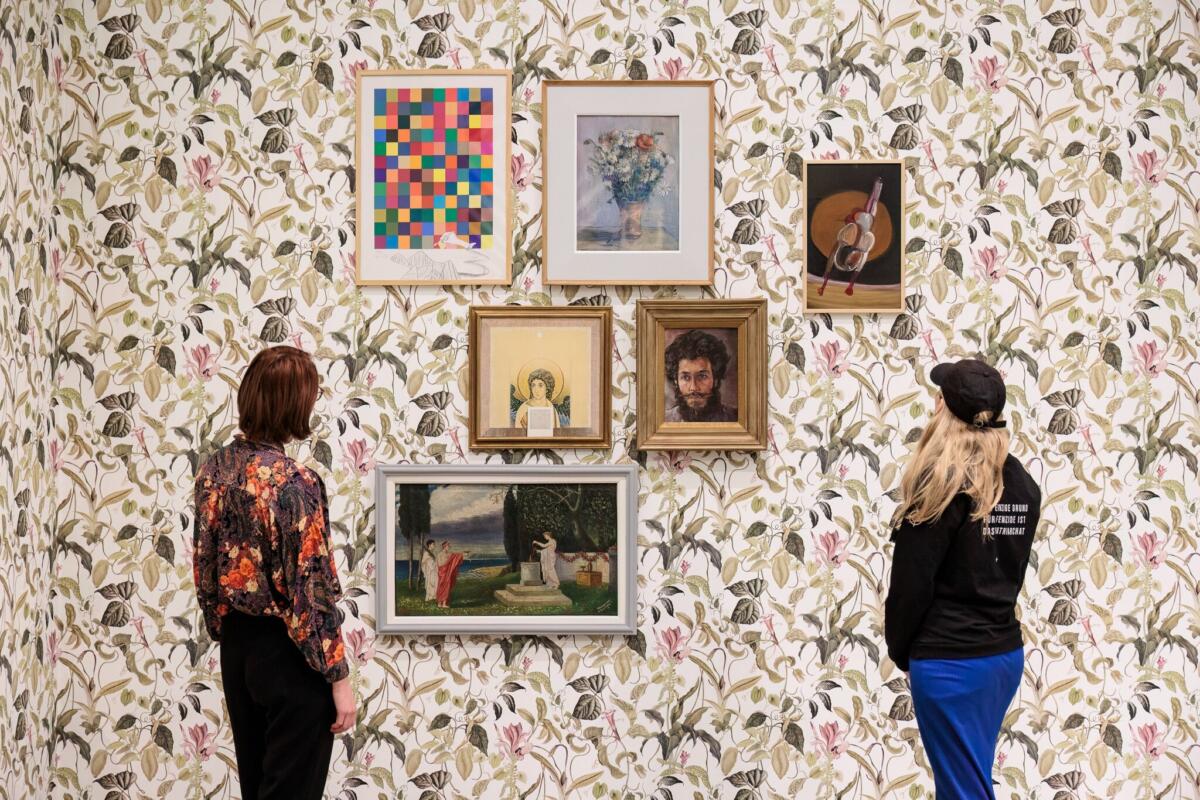
If the juxtaposition between works from the MoCA collection and the contemporary interventions hold the connotations of a productive encounter or, on the contrary, of a suffered confrontation, this is an evaluation that should be considered case by case. The duo composed of Yane Calovski and Hristina Ivanoska, for example, have been particularly successful in creating a dynamic interaction between their work and the pieces of Aneta Svetieva and Dushan Perchinkov, two contemporary Macedonian artists with strongly contrasting aesthetic vocabularies. By applying Oskar Hansen’s theory of “Open Form” to Svetieva’s archetypal sculptures and Perchinkov’s geometrical drawings, they turn the gesture of “appropriation” into the signature of their intervention at Kunsthalle Wien. Their reuse of pre-existing forms is fully expressed in the group of motorized sculptural installations and large-scale typographical murals, which have been realized by the duo of artists.
Emblematic of the necessity of injecting new perspectives that can affect how the present is interpreted – an aspiration that is present throughout the exhibition, Siniša Ilić altered the exhibition space by inserting new sitting platforms, each with differing heights, from which to observe the artworks in the collection. Ilić’s reorganization of the visitor’s gaze confronts the viewer with one of the darkest sculptures in the collection, Dimo Todorovski’s Mother and Child the Collection – Skopje Tragedy (1963). This sculpture explicitly refers to the 1963 earthquake by portraying a baby crawling over the corpse of a dead woman. Ilić’s works, which also include a grid of twenty abstract collages, Filigran, 2022-23, and three screens showing video performance, together with watercolor paintings, pairs the destruction of the city with its reconstruction, and ultimately, to today’s social dynamics connected to the realm of labor.




No Feeling is Final generates hopeful visions that directly compete with, and offer alternatives to the voyeuristic imaginary of despair that we witness through mass media, especially these days. Detachment from reality and escapism is certainly not the behavior that WHW and the artists involved in the exhibition encourage, on the contrary, they make a firm argument in favor of new forms of mutuality and resistance capable of supplanting individualistic closures and nationalistic politics. Yet, in a surprising decision by the Viennese City cultural administration, in 2023 it was determined that the contract for WHW would not be prolonged, their work agreement ending in June 2024. Perhaps it is this attempt to deconstruct the master’s house from the inside, by using different tools, as Audre Lorde has thoughtfully taught us, that is the reason for this decision. It will certainly not be easy to replace their bold curatorial propositions while also refusing to conform to the populist principle of ticket sales, or without regressing to a kind of art that upholds misleading promises of social and political neutrality.


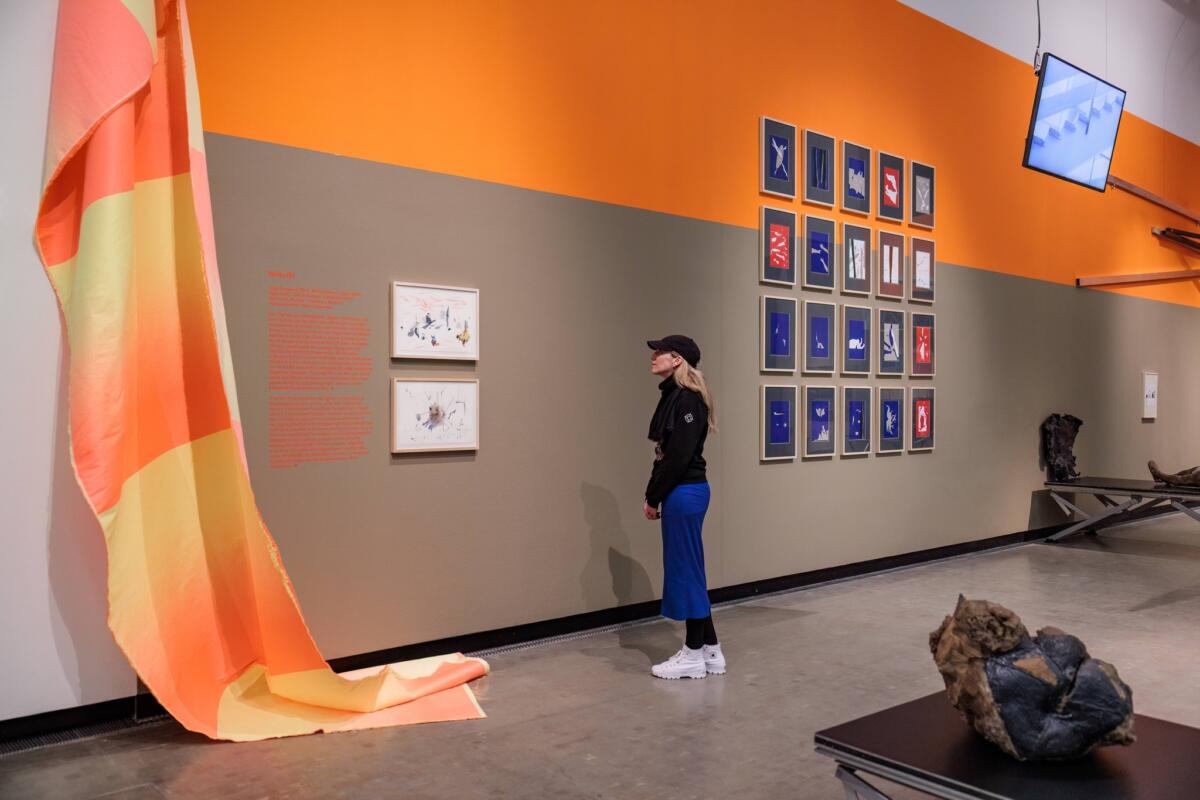
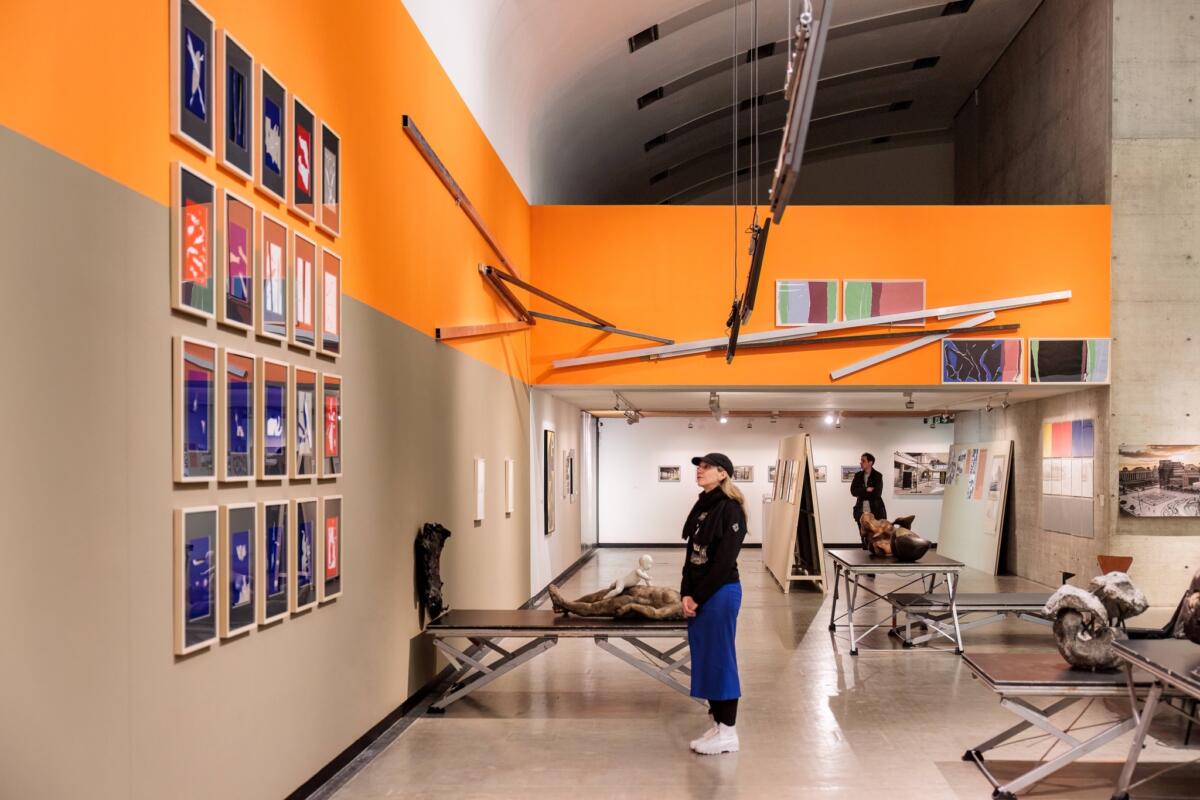
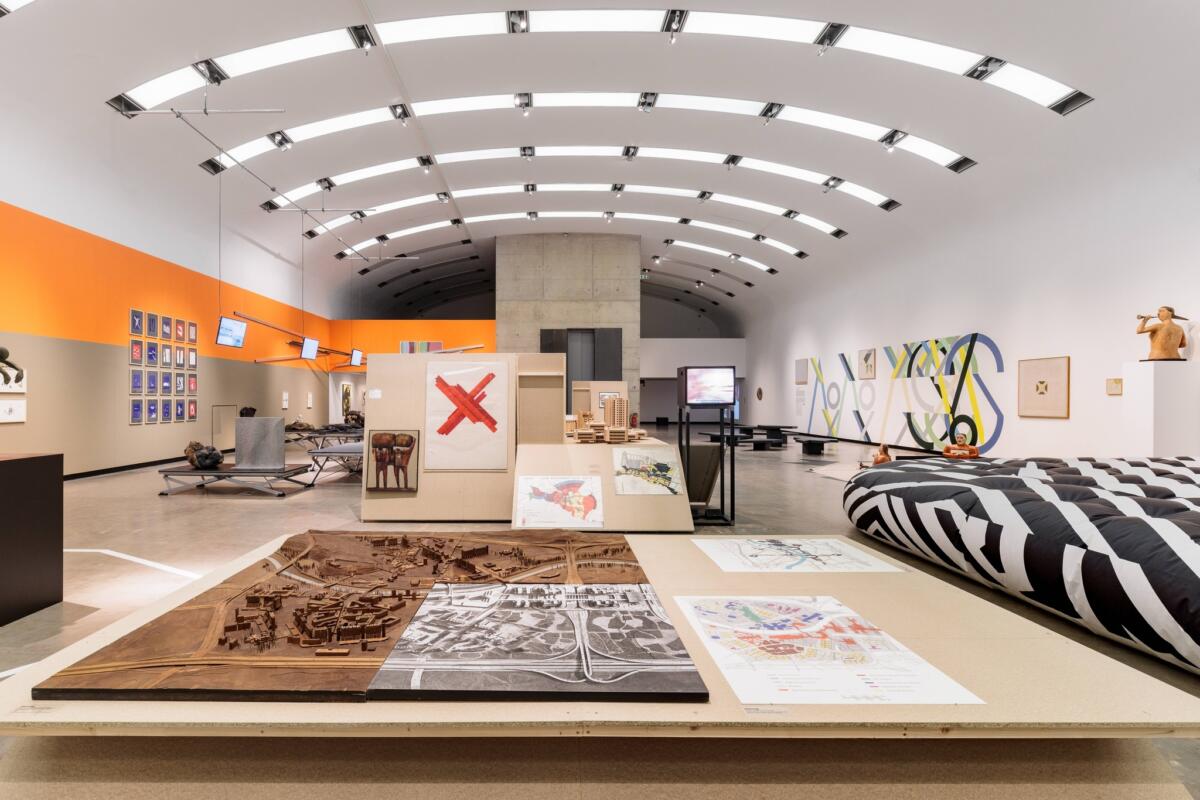

REFERENCES:
L’Internationale Confederation, Public letter on WHW termination as director of Kunsthalle Wien, 10 Jan. 2023. Available:
Hadjian, Avedis. “Art Collective Ousted From Viennese Kunsthalle Speaks Out”, Hyperallergic, January 23, 2023. Available:
https://hyperallergic.com/794850/art-collective-ousted-from-viennese-museum-speaks-out/
Speidel, Klaus. “INTERVIEW: COLLECTIVE WHW ON THEIR APPOINTMENT AS DIRECTORS OF KUNSTHALLE WIEN”, Spike Art Magazine, 18 June 2019. Available: https://www.spikeartmagazine.com/articles/interview-collective-whw-their-appointment-directors-kunsthalle-wien
Imprint
| Artist | Brook Andrew, Yane Calovski, Hristina Ivanoska, Siniša Ilić, Iman Issa, Gülsün Karamustafa, Barbi Marković, Elfie Semotan; With artists from the collection: Pierre Alechinsky, Getulio Alviani, Dimitar Avramovski Pandilov, Enrico Baj, Georg Baselitz, Anna-Eva Bergman, Maria Bonomi, Alberto Burri, Zofia Butrymowicz, Alexander Calder, Luis Camnitzer, Christo & Jeanne-Claude, Bronisław Chromy, Peter Clarke, Božidar Damjanovski, Josip Demirović Devj, Josip Diminić, Slobodan Filovski, Michel Gérard, Ion Grigorescu, Sheila Hicks, David Hockney, Alfred Hrdlicka, Bogoljub Ivković, Olga Jančić, Olga Jevrić, Jasper Johns, Alex Katz, Zoltán Kemény, Rudolf Krivoš, Boško Kućanski, Wifredo Lam, Sol LeWitt, Oto Logo, Petar Lubarda, Nikola Martinoski, Roberto Matta, Zoran Muši, Meret Oppenheim, Olga Peczenko-Srzednicka, Dushan Perchinkov, Pablo Picasso, Bogoja Popovski, Joan Rabascall, Vjenceslav Richter, Bridget Riley, Ivan Sabolić, Niki de Saint Phalle, Francesco Somaini, François Stahly, Henryk Stażewski, Gligor Stefanov, Kumi Sugai, Aneta Svetieva, Beáta Széchy, Dimo Todorovski, Victor Vasarely, Vladimir Veličković, Тоmо Vladimirski, Marjan Vojska |
| Exhibition | No Feeling Is Final. The Skopje Solidarity Collection |
| Place / venue | Kunsthalle Wien |
| Dates | 20 April 2023 - 28 Jan, 2024 |
| Curated by | What, How & for Whom / WHW (Ivet Ćurlin, Nataša Ilić and Sabina Sabolović) |
| Photos | www.kunst-dokumentation.com |
| Website | kunsthallewien.at/en/exhibition/no-feeling-is-final-the-skopje-solidarity-collection/ |
| Index | Alberto Burri Alex Katz Alexander Calder Alfred Hrdlicka Aneta Svetieva Anna-Eva Bergman Barbi Marković Beáta Széchy Bogoja Popovski Bogoljub Ivković Boško Kućanski Božidar Damjanovski Bridget Riley Bronisław Chromy Brook Andrew Christo & Jeanne-Claude David Hockney Dimitar Avramovski Pandilov Dimo Todorovski Dushan Perchinkov Elfie Semotan Enrico Baj Francesco Somaini François Stahly Georg Baselitz Getulio Alviani Giulia Menegale Gligor Stefanov Gülsün Karamustafa Henryk Stażewski Hristina Ivanoska Iman Issa Ion Grigorescu Ivan Sabolić Jasper Johns Joan Rabascall Josip Demirović Devj Josip Diminić Kumi Sugai Kunsthalle Wien Luis Camnitzer Maria Bonomi Marjan Vojska Meret Oppenheim Michel Gérard Museum of Contemporary Art (MoCA) Skopje Niki de Saint Phalle Nikola Martinoski Olga Jančić Olga Jevrić Olga Peczenko-Srzednicka Oto Logo Pablo Picasso Petar Lubarda Peter Clarke Pierre Alechinsky Roberto Matta Rudolf Krivoš Sheila Hicks Siniša Ilić Slobodan Filovski Sol LeWitt The Skopje Solidarity Collection Victor Vasarely Vjenceslav Richter Vladimir Veličković WHW Wifredo Lam Yane Calovski Zofia Butrymowicz Zoltán Kemény Zoran Muši Тоmо Vladimirski |

